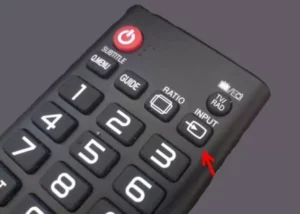- Preparing to flash Samsung TV firmware
- What you need to know before installing the firmware
- How to backup your data
- How to choose the firmware version for a Samsung TV
- Samsung TV firmware process
- How to connect a TV to a computer
- Solving problems after flashing Samsung TV
- How to restore your Samsung TV to factory settings
Preparing to flash Samsung TV firmware
Before you start flashing your Samsung TV, you need to do a few preparatory steps. First, make sure you have all the necessary materials for flashing the firmware, including software and a cable to connect your TV to your computer. Secondly, save all important data and files from the TV to another device to avoid losing them during the flashing process. You also need to disconnect all external devices connected to the TV, including flash drives and hard drives. Finally, make sure your TV is fully charged or connected to a power source. By following these simple guidelines, you are ready to flash your Samsung TV.
What you need to know before installing the firmware
Flashing a Samsung TV is the process of updating the device's software. It can improve the TV's performance, fix bugs, and add new features. However, before you start flashing, there are a few things to consider.
1. Save all important data. Firmware may lead to the loss of settings, channels and other information, so before starting the process it is recommended to save all data to external media.
2. Check the firmware version. Before downloading a new firmware version, make sure it is compatible with your TV. You can check the current firmware version in the TV settings.
3. Find a reliable firmware source. Do not download firmware from unofficial sites as it may contain viruses or be incompatible with your TV. It is best to download the firmware from the manufacturer's official website.
4. Follow the manufacturer's instructions. Each TV has its own firmware instructions that must be followed. Failure to perform the process correctly may result in malfunctions and damage to the device.
Always remember that firmware is a responsible process that can affect the operation of your TV. If you are not confident in your abilities, it is better to contact a specialist.
How to backup your data
Samsung TV firmware can erase all your data, so be sure to make a backup before starting the process. To do this, you will need to connect an external hard drive or flash drive to the TV and select 'Create a backup copy' in the settings menu. You can also use special programs to backup data. It's important to remember that creating a backup should be a daily habit so that if your system crashes, you won't be left without important information.
How to choose the firmware version for a Samsung TV
Samsung TV firmware is the software that controls the operation of the device. Choosing the firmware version is important, as an incorrect update can lead to unexpected problems and breakdowns.
The first step in choosing the firmware version for your Samsung TV is to find your device model. This is usually indicated on the back of the TV or in its instructions.
Then you need to go to the official Samsung website and go to the support section. Enter your TV model and find the firmware download page.
On the firmware download page you will find a list of available versions. You need to choose the latest version as it contains all the previous fixes and improvements. However, if you notice some problem with your TV and know that it was fixed in an older firmware version, you can select it.
After selecting the firmware version, you must follow the instructions for installing it. In most cases, this comes down to downloading the file and uploading it to the TV via a USB drive.
Selecting the firmware version for your Samsung TV is an important process that can affect the operation of your device. Follow the instructions and select the latest firmware version to ensure the best performance and security for your TV.
Samsung TV firmware process
Flashing your Samsung TV may be necessary if you encounter problems such as inability to access applications or insufficient device performance. The flashing process is quite simple and can be done even by a novice user.
The first step is to download the required firmware from the Samsung website. Find your TV model and download the latest firmware that is available for your device.
Next, prepare a flash drive that will be used to install the new firmware. The flash drive must be FAT32 format and must have enough free space to load the firmware.
After that, copy the downloaded firmware file to the flash drive. Make sure the file is in the root folder and has the correct name.
Now unplug the TV from the electrical outlet and connect the flash drive to the USB port on the TV.
Turn on the TV and press the "Menu" button on the remote control. Select Support and then click Software Update. The TV will begin scanning the connected flash drive and detect the new firmware.
Click "Update" to start the firmware process. During the process, the TV may reboot several times. Do not turn off the TV or remove the flash drive while flashing the firmware.
Once the firmware is completed, the TV will automatically reboot and load the new software version.
You can now enjoy improved performance and new features on your Samsung TV. Remember to update your firmware regularly to stay up to date with the latest updates and fixes.
How to connect a TV to a computer
Connecting your TV to your computer can be useful if you want to watch videos or photos on the big screen. To do this, you'll need an HDMI or VGA cable, depending on what ports are available on your computer and TV.
To connect via HDMI, simply plug one end of the cable into the HDMI port on your TV and the other end into the HDMI port on your computer. If you don't have an HDMI port on your computer, you can use a VGA cable. To do this, plug one end of the cable into the VGA port on your TV and the other end into the VGA port on your computer.
After connecting the cable, select the appropriate input on your TV. If you are using HDMI, then select the HDMI input, and if you are using VGA, then select VGA. After this, the image from the computer should appear on the TV.
If you want to use your TV as an additional monitor, you can configure the display on your computer. To do this, go to the display settings and select the desired resolution and monitor location.
Connecting a TV to a computer is a simple procedure that allows you to enjoy large images and ease of viewing.
If you want to improve the functionality and performance of your Samsung TV, then flashing firmware can help you do that. This is a fairly simple process that can be done via USB.
Step 1: Download the appropriate firmware for your Samsung TV from the official Samsung website.
Step 2: Unzip the downloaded archive and copy the firmware file to the USB flash drive.
Step 3: Connect the USB flash drive to the USB port of your Samsung TV.
Step 4: Turn on your Samsung TV and go to Settings.
Step 5: Select 'Software Update'.
Step 6: Select 'Update via USB'.
Step 7: Select the firmware file that you copied to the USB flash drive.
Step 8: Click the 'Update' button and wait for the update process to complete.
Step 9: Once the update is complete, your Samsung TV will reboot automatically.
You can now enjoy improved functionality and performance from your Samsung TV. Remember to update your firmware regularly to ensure your TV is always running at peak performance. If you want to update the software on your Samsung TV, you can do it via Wi-Fi. Updating your TV's firmware can improve its performance and add new features. In this article we will tell you how to flash a Samsung TV step by step.
Step 1: Connect your TV to Wi-Fi
Before you can flash your Samsung TV via Wi-Fi, make sure it is connected to the Internet. To do this, go to the TV settings and select the 'Network' option. Then select 'Wireless Connection' and follow the on-screen instructions to connect your TV to Wi-Fi.
Step 2: Check for updates
Once the TV is connected to Wi-Fi, go to settings and select the 'Software update' option. The TV will automatically check for updates and notify you if they are available.
Step 3: Download and install updates
If updates are available, click the 'Download' button and wait for the download to complete. Then click the 'Install' button and wait until the update is installed on your TV.
Step 4: Restart the TV
After installing the update, the TV will automatically reboot. Wait until it downloads completely and check that the update was installed successfully.
In conclusion, flashing your Samsung TV via Wi-Fi is a simple and convenient way to update its software. Follow these simple steps to ensure better performance and more features on your TV.
Solving problems after flashing Samsung TV
After flashing your Samsung TV, some problems may arise. One of the most common problems is poor image quality. In this case, you need to check the screen settings and adjust them according to your preferences.
Another problem could be the lack of sound. In this case, you need to check your audio settings and make sure they are configured correctly. If the problem persists, try restarting your TV.
If you encounter an issue where your Samsung TV won't turn on after flashing the firmware, don't panic. First, try rebooting your device. If this doesn't help, try reverting to the old firmware.
In any case, problems after flashing a Samsung TV can be solved. The main thing is not to lose calm and follow the instructions. If the TV does not turn on after flashing, do not panic. There are several reasons why this may happen.
First, check if you downloaded the firmware correctly and if you installed it correctly. If you doubt this, seek professional help.
Secondly, check if your TV supports this firmware. Some TV models cannot work with certain types of firmware.
If you are sure that you did everything correctly, try resetting the TV to factory settings. To do this, press the 'Menu' button on the remote control, select 'Settings', then 'System' and 'Reset'.
If none of the above helps, seek professional help or a service center so they can try to get your TV working again.
Remember that flashing a TV is a complex process that can lead to irreversible consequences if you do something wrong. Therefore, if you are not sure that you can handle the flashing yourself, it is better to entrust this work to professionals.
How to restore your Samsung TV to factory settings
Restoring your Samsung TV to factory settings can help resolve many settings and firmware related issues. This is done simply and quickly. Here's how to do it:
1. On the remote control, press the 'Menu' button.
2. Select 'Settings' and press 'Enter'.
3. Select 'Reset' and press 'Enter'.
4. Select 'Reset settings' and press 'Enter'.
5. Enter the password (if set) and press 'Enter'.
6. Press 'Enter' again to confirm the reset.
After this, the Samsung TV will reboot and restore its factory settings. Please note that all settings and data will be deleted, so you must back up your important data before resetting.
Now you know how to restore your Samsung TV to factory settings. This is a simple and effective way to solve many problems with your TV.
Read further:






